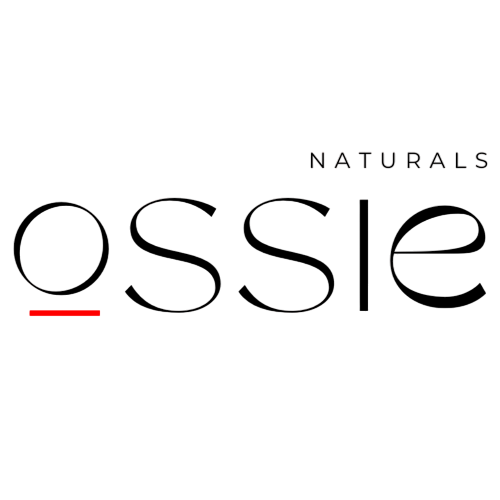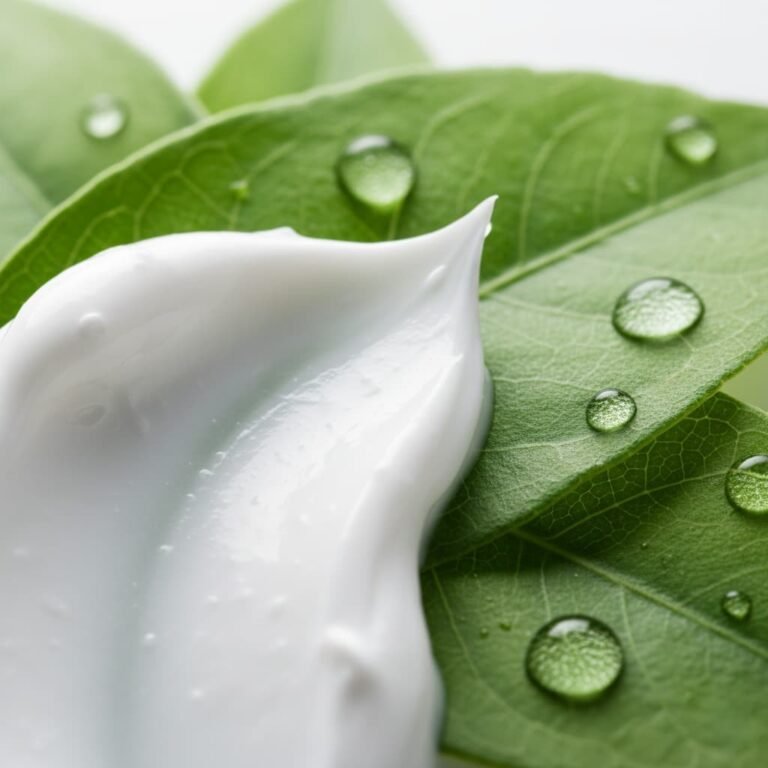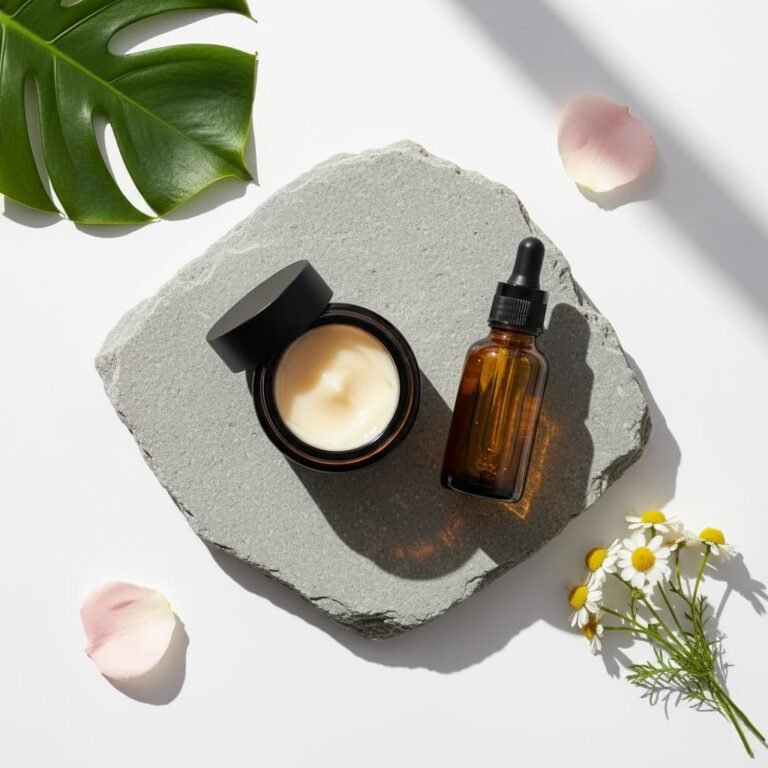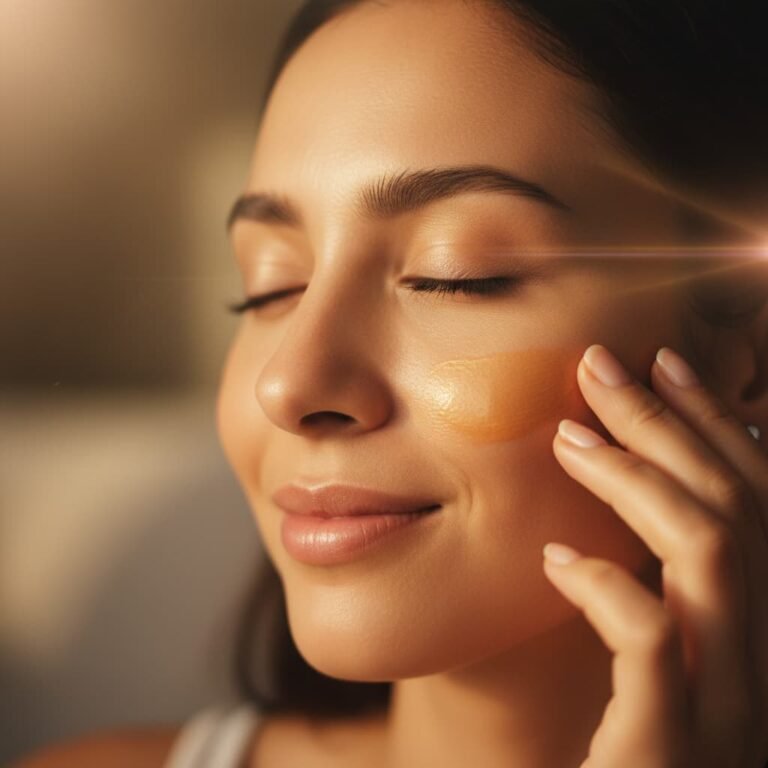Cómo preparar la piel para los cambios estacionales: La ciencia detrás de la adaptación medioambiental
La mayoría de las personas afrontan las transiciones estacionales del cuidado de la piel de forma reactiva, esperando a que su piel muestre signos evidentes de malestar antes de hacer ajustes.
Your Skin Is Already Three Steps Ahead of You

While you’re still mentally clinging to summer, your skin has already begun its complex biochemical preparations for autumn. This isn’t metaphorical – it’s measurable, observable physiology happening at the cellular level right now. Your sebaceous glands are adjusting oil production in response to changing humidity levels. Your stratum corneum is altering its lipid composition to prepare for different environmental stressors. Your melanocytes are shifting their activity patterns as daylight hours change.
Most people approach seasonal skincare transitions reactively, waiting until their skin shows obvious signs of distress before making adjustments. This approach misses a critical window of opportunity. Your skin’s adaptive mechanisms work best when supported proactively, before environmental stressors overwhelm its natural compensation abilities. Understanding these processes – and working with them rather than against them – can mean the difference between skin that struggles through seasonal changes and skin that thrives through them.
The Physiology of Seasonal Skin Adaptation: What's Actually Happening
Your skin’s response to seasonal changes involves complex, interconnected systems that most skincare advice oversimplifies or ignores entirely. Let’s examine what’s actually occurring at the cellular level during this critical transition period.
Sebaceous Gland Regulation: Your oil glands don’t just respond to hormones – they’re exquisitely sensitive to environmental humidity levels. As atmospheric moisture decreases from summer to autumn, your sebaceous glands receive signals to increase oil production to compensate for reduced environmental moisture. However, this compensation isn’t immediate or perfect. There’s typically a 2-4 week lag period where your skin experiences relative dryness before oil production fully adjusts.
This lag period explains why many people experience unexpectedly dry skin in early autumn, despite having oily skin throughout the summer. The environmental change happens faster than your skin’s adaptive response, creating a temporary mismatch that requires external support.
Barrier Function Dynamics: Your skin barrier isn’t static – it’s constantly rebuilding itself in response to environmental demands. The lipid composition of your stratum corneum shifts seasonally, with different ratios of ceramides, cholesterol, and free fatty acids optimised for different environmental conditions.
Summer barrier composition emphasises lighter lipids that provide protection without feeling heavy in humid conditions. Autumn preparation involves shifting toward heavier, more occlusive lipid profiles that can maintain moisture in drier air. This transition requires specific building blocks that may not be adequately supplied through normal cell turnover alone.
Circadian Rhythm Adjustments: Changing daylight patterns affects your skin’s circadian rhythms, influencing everything from cell division rates to antioxidant production. Your skin produces different levels of protective compounds at different times of day, and these patterns shift as daylight hours change.
During seasonal transitions, these circadian adjustments can temporarily disrupt your skin’s normal repair and protection cycles. Supporting these rhythms through consistent routines and appropriate ingredient timing becomes particularly important during transition periods.
Microcirculation Changes: Temperature fluctuations affect blood flow to your skin, influencing nutrient delivery and waste removal. The alternating warm days and cool evenings typical of late summer/early autumn create circulation patterns that can stress your skin’s normal metabolic processes.
The August-September Transition: A Perfect Storm of Environmental Stressors
The late summer to early autumn transition presents a unique combination of environmental challenges that stress your skin’s adaptive systems simultaneously.
Humidity Volatility: Rather than a gradual decrease in moisture levels, late summer often brings dramatic day-to-day humidity swings. Your skin might experience 80% humidity one day and 45% the next, forcing rapid adjustments that can overwhelm normal adaptive mechanisms.
Temperature Oscillation: Daily temperature ranges of 20-30 degrees (this may vary depending on where you live) become common, requiring your skin to manage both heat stress during the day and moisture retention during cooler evenings. This constant adjustment taxes your skin’s regulatory systems.
Light Quality Changes: Not only do daylight hours decrease, but the quality of light changes as the sun’s angle shifts. Different wavelengths penetrate your skin differently, affecting vitamin D synthesis, melanin production, and cellular repair processes.
Indoor Environment Shifts: The transition from air conditioning to heating systems creates additional environmental stress. Air conditioning removes humidity while heating systems actively dry the air, creating a double challenge for skin moisture retention.
UV Exposure Misconceptions: Many people reduce sun protection as summer ends, not realising that UV intensity can remain high well into autumn. This creates a period of increased photodamage risk just as skin is dealing with other environmental stressors.
The Ingredient Science: What Your Skin Actually Needs During Transitions
Effective seasonal transition skincare requires understanding which ingredients support your skin’s natural adaptive processes rather than working against them.
Barrier-Supporting Lipids: During seasonal transitions, your skin needs building blocks for barrier reconstruction. This isn’t just about moisturisation – it’s about providing the specific lipid components your skin uses to build its protective barrier.
Ceramides: These lipid molecules form the “mortar” between skin cells. Natural ceramides from sources like wheat germ or synthetic versions identical to human ceramides provide direct building blocks for barrier repair. However, ceramides work best when combined with cholesterol and fatty acids in ratios that mirror natural skin composition.
Cholesterol: Often overlooked in skincare, cholesterol is essential for proper barrier function. It helps organise lipid layers and maintains barrier fluidity across temperature ranges. Lanolin and certain plant sterols can provide cholesterol precursors.
Essential Fatty Acids: Linoleic acid and alpha-linolenic acid are particularly important during barrier transitions. These fatty acids can’t be synthesised by your skin and must be supplied topically or systemically. Rosehip oil, evening primrose oil, and certain algae extracts provide these essential components.
Adaptive Antioxidants: Seasonal transitions create oxidative stress as your skin adjusts to new environmental conditions. Rather than using high concentrations of single antioxidants, complex antioxidant systems work better during transition periods.
Vitamin C Systems: L-ascorbic acid provides immediate antioxidant protection, but it works synergistically with vitamin E and glutathione. Stable vitamin C derivatives like magnesium ascorbyl phosphate provide longer-term support.
Polyphenol Complexes: Green tea extract, grape seed extract, and resveratrol provide broad-spectrum antioxidant protection while supporting your skin’s natural antioxidant enzyme systems.
Carotenoid Protection: Beta-carotene, lycopene, and astaxanthin accumulate in skin tissues and provide ongoing protection against environmental stress.
Hydration Modulators: Seasonal transitions require ingredients that can adjust to changing humidity levels rather than providing static hydration.
Hyaluronic Acid Considerations: While hyaluronic acid is excellent for humid conditions, it can actually draw moisture from your skin in very dry environments. During seasonal transitions, lower molecular weight hyaluronic acid combined with occlusive agents works better than high concentrations alone.
Glycerine Optimisation: Glycerine is hygroscopic, meaning it attracts moisture from the environment. In high humidity, this provides excellent hydration. In low humidity, glycerine needs to be balanced with occlusive ingredients to prevent moisture loss.
Natural Moisturising Factors: Ingredients that mimic your skin’s natural moisturising factors – like sodium PCA, lactic acid, and urea – help maintain hydration across varying environmental conditions.
The Tallow Advantage: Bio-Compatible Seasonal Support
Tallow deserves special attention in seasonal transition skincare because its composition naturally supports the adaptive processes your skin undergoes during environmental changes.
Lipid Profile Matching: Tallow’s fatty acid composition closely mirrors human sebum, providing the exact building blocks your skin needs for barrier adaptation. As your skin shifts its lipid production for autumn conditions, tallow provides compatible support materials.
Seasonal Consistency: Unlike plant oils that can vary seasonally in composition, properly rendered tallow maintains consistent fatty acid ratios year-round. This consistency provides stable support during the inherently unstable transition period.
Temperature Adaptation: Tallow’s melting point and consistency change with temperature in ways that complement your skin’s needs. It’s more solid in cool weather (providing better barrier protection) and softer in warm weather (allowing better absorption).
Vitamin Integration: The fat-soluble vitamins in tallow (A, D, E, K) are present in forms your skin readily utilises. During seasonal transitions, when your skin’s vitamin synthesis and utilisation patterns are shifting, these bioavailable vitamins provide crucial support.
The Routine Architecture: Building Adaptive Skincare Systems
Effective seasonal transition skincare isn’t about switching products – it’s about adjusting the architecture of your routine to support your skin’s changing needs.
Layering Strategy for Variable Conditions: Create a flexible layering system that can be adjusted based on daily environmental conditions rather than following a rigid routine.
Base Layer: A lightweight, fast-absorbing serum with hyaluronic acid and vitamin C provides foundational hydration and antioxidant protection.
Adaptive Layer: A treatment product that can be adjusted based on daily needs – more on dry days, less on humid days. This might be a facial oil, essence, or lightweight moisturiser.
Protective Layer: A barrier-supporting moisturiser or balm that provides consistent protection regardless of environmental conditions.
Seasonal Timing Optimisation: Adjust application timing to support your skin’s changing circadian rhythms.
Morning Routine: Focus on protection and environmental defence. Antioxidants, sun protection, and barrier support take priority.
Evening Routine: Emphasise repair and regeneration. This is when to use more intensive treatments and barrier-rebuilding ingredients.
Transition Timing: Begin routine adjustments 2-3 weeks before environmental changes become severe. This gives your skin time to adapt gradually rather than being shocked by sudden changes.
The Exfoliation Paradox: Removing vs. Protecting
One of the most misunderstood aspects of seasonal transition skincare involves exfoliation. Summer often leaves skin with accumulated damage, uneven texture, and clogged pores that seem to demand aggressive treatment. However, seasonal transitions are precisely when your skin’s barrier function is most vulnerable.
The Summer Damage Assessment: Before adjusting your exfoliation approach, honestly assess what summer has done to your skin. Sun exposure increases cell turnover in some areas while causing thickening in others. Chlorine, salt water, and increased sweating can leave residue and alter your skin’s pH balance. Air conditioning and sun exposure can create patches of dehydration alongside areas of excess oil production.
Gentle Renewal Strategies: Rather than aggressive exfoliation to “reset” your skin, focus on gentle renewal that supports rather than disrupts barrier function.
Enzymatic Exfoliation: Fruit enzymes like papain and bromelain gently dissolve dead skin cells without mechanical abrasion. These work particularly well during transition periods because they’re self-limiting – they stop working when they encounter healthy skin cells.
Low-Concentration Acids: Very low concentrations of lactic acid (1-2%) or mandelic acid can provide gentle chemical exfoliation while also providing hydration benefits. These gentler acids support barrier function rather than compromising it.
Physical Exfoliation Caution: If you use physical exfoliation, reduce frequency and intensity during seasonal transitions. Your skin’s protective capacity is already being challenged by environmental changes.
The Hydration Hierarchy: Matching Moisture to Environmental Demands
Understanding how different types of hydration work allows you to adjust your approach based on changing environmental conditions rather than following a one-size-fits-all routine.
Humectant Hydration: Ingredients like hyaluronic acid, glycerine, and sodium PCA draw moisture from the environment. These work excellently in humid conditions but need support in dry environments.
Emollient Hydration: Ingredients like squalane, jojoba oil, and fatty acid esters fill spaces between skin cells and smooth the texture. These provide consistent benefits regardless of environmental humidity.
Occlusive Hydration: Ingredients like beeswax and certain plant waxes form a protective barrier that prevents moisture loss. These become increasingly important as environmental humidity decreases.
Dynamic Hydration Strategy: Create a system that allows you to adjust hydration levels based on daily environmental conditions:
High Humidity Days: Focus on humectants and lightweight emollients. Your skin can draw moisture from the environment, so you mainly need to help it capture and hold that moisture.
Low Humidity Days: Emphasise emollients and occlusives. Your skin needs both moisture replacement and protection against moisture loss.
Variable Days: Use a layered approach that provides multiple types of hydration, allowing your skin to utilise what it needs most.
The Inflammation Connection: Managing Transition Stress
Seasonal transitions create low-level inflammatory stress as your skin adapts to new environmental conditions. This inflammation isn’t necessarily visible but can manifest as increased sensitivity, slower healing, and reduced barrier function.
Anti-Inflammatory Support: Incorporate gentle anti-inflammatory ingredients that support rather than suppress your skin’s adaptive processes.
Calendula Extract: This botanical provides gentle anti-inflammatory benefits while supporting tissue repair. Unlike some anti-inflammatory ingredients that can interfere with healing, calendula actually promotes healthy inflammatory resolution.
Chamomile Compounds: Bisabolol and chamazulene from chamomile provide anti-inflammatory benefits while supporting barrier function. These compounds are particularly effective for environmentally-stressed skin.
Omega Fatty Acids: Topical omega-3 and omega-6 fatty acids provide building blocks for anti-inflammatory compounds your skin produces naturally. These work systemically rather than just providing surface benefits.
Green Tea Polyphenols: EGCG and other catechins from green tea provide antioxidant protection while modulating inflammatory responses. These compounds help your skin adapt to environmental stress more effectively.
The Microbiome Consideration: Supporting Seasonal Bacterial Balance
Your skin’s bacterial ecosystem changes seasonally in response to environmental conditions, and supporting this transition can significantly impact how well your skin adapts to seasonal changes.
Seasonal Microbiome Shifts: Different bacterial strains thrive under different environmental conditions. The bacteria that dominate your skin microbiome in humid summer conditions may not be optimal for drier autumn environments.
Prebiotic Support: Rather than trying to add specific bacteria to your skin, focus on feeding the beneficial bacteria that are naturally present. Ingredients like inulin, fructooligosaccharides, and certain plant extracts provide nutrition for beneficial bacteria.
pH Balance: Maintaining your skin’s natural pH (around 5.5) becomes particularly important during seasonal transitions when environmental stressors can disrupt acid mantle function. Gentle, pH-balanced products support beneficial bacteria while discouraging harmful strains.
Avoiding Microbiome Disruption: Harsh cleansers, high concentrations of antimicrobial ingredients, and dramatic pH changes can disrupt your skin’s bacterial balance just when it needs to be adapting to new environmental conditions.
The Body Integration: Beyond Facial Skincare
Most seasonal transition advice focuses exclusively on facial skincare, ignoring the reality that environmental changes affect your entire body’s skin, and these areas influence each other. Check how our natural Bio-Mimicking Body Butter will help to repair and deeply moisturise your skin.
Neck and Décolletage: These areas often show seasonal stress first because the skin is thinner and more exposed. They also tend to be neglected in daily routines, making them vulnerable during transitions.
Hand Care: Your hands face the most dramatic environmental exposure and often show seasonal effects most dramatically. Dry, damaged hands can harbour bacteria that affect facial skin, making comprehensive hand care part of facial skincare.
Body Skin Considerations: Large areas of body skin contribute to overall hydration and barrier function. Severely dry body skin can affect your overall skin health and comfort.
Integrated Approach: Use similar principles across all skin areas, adjusting concentration and richness based on each area’s specific needs and exposure levels.
The Timing Strategy: When to Make Changes

The timing of routine adjustments can significantly impact how successfully your skin adapts to seasonal changes.
Proactive Timing: Begin routine adjustments 2-3 weeks before environmental conditions typically change in your area. This gives your skin time to adapt gradually rather than being shocked by sudden changes.
Gradual Implementation: Introduce new products or routine changes one at a time over several days or weeks. This allows you to identify what works and what doesn’t while avoiding overwhelming your skin with too many changes simultaneously.
Environmental Monitoring: Pay attention to local weather patterns, humidity levels, and indoor heating/cooling schedules. These factors often matter more than calendar dates for timing routine adjustments.
Individual Response: Monitor your skin’s response to environmental changes and adjust timing based on your skin’s specific patterns rather than following generic seasonal advice.
If you haven’t read our post, “Del resplandor del verano a la luminosidad del otoño: La transición de su rutina de cuidado natural de la piel“. Have a look!. You will get more information to prepare your skin.
The Product Selection Criteria: Choosing Transition-Friendly Formulations
Not all skincare products work well during seasonal transitions. Some formulations that work excellently in stable environmental conditions can cause problems when your skin is adapting to change.
Formulation Stability: Choose products with stable formulations that won’t separate or change properties with temperature fluctuations. This is particularly important for products containing active ingredients.
Ingredient Compatibility: Avoid products with ingredients that might conflict with your skin’s adaptive processes. For example, very high concentrations of exfoliating acids can interfere with barrier rebuilding.
Texture Flexibility: Look for products with textures that work across a range of environmental conditions. A moisturiser that feels perfect in humid conditions but too heavy in dry conditions isn’t ideal for transition periods.
Minimal Sensitisation Risk: Choose products with minimal potential for causing sensitisation reactions. Your skin may be more reactive during adaptation periods, making gentle formulations particularly important.
The Common Mistakes: What Not to Do During Seasonal Transitions
Understanding what not to do during seasonal transitions is often more important than knowing what to do.
Routine Overhaul: Completely changing your skincare routine at the beginning of a seasonal transition overwhelms your skin’s adaptive capacity. Your skin is already dealing with environmental changes – adding product changes creates additional stress.
Aggressive Treatment: Trying to “fix” summer damage with aggressive treatments during seasonal transitions can backfire. Your skin’s repair capacity may be compromised during adaptation periods, making gentle approaches more effective.
Ignoring Individual Patterns: Following generic seasonal advice without considering your skin’s individual response patterns often leads to inappropriate care. Your skin’s seasonal patterns may not match general recommendations.
Over-Supplementation: Adding too many new products or ingredients at once can overwhelm your skin and make it difficult to identify what’s helping versus what’s causing problems.
Environmental Neglect: Focusing only on topical skincare while ignoring environmental factors like indoor humidity, heating systems, and sun protection limits the effectiveness of your routine adjustments.
The Measurement Approach: Tracking Transition Success
Objective measurement of how well your skin is adapting to seasonal changes helps you refine your approach and identify what’s working.
Hydration Monitoring: Pay attention to how your skin feels throughout the day, particularly in areas that typically show dryness first (around eyes, corners of mouth, knuckles).
Sensitivity Tracking: Note any increases in sensitivity, irritation, or reactivity. These often indicate that your skin’s adaptive processes are being overwhelmed.
Texture Assessment: Monitor changes in skin texture, particularly roughness or flakiness that might indicate inadequate barrier support.
Recovery Rate: Notice how quickly your skin recovers from minor irritations or environmental exposure. Slower recovery often indicates that adaptive systems are stressed.
Overall Comfort: Track your overall skin comfort levels. Well-adapted skin should feel comfortable throughout the day regardless of environmental fluctuations.
The Long-Term Perspective: Building Seasonal Resilience
The goal of seasonal transition skincare isn’t just to survive each seasonal change but to build your skin’s long-term resilience to environmental fluctuations.
Adaptive Capacity Building: Consistent, appropriate seasonal support helps your skin develop better adaptive capacity over time. Skin that’s well-supported through several seasonal transitions becomes more resilient to environmental changes.
Cumulative Damage Prevention: Proper seasonal care prevents the accumulation of environmental damage that can compromise your skin’s long-term health and appearance.
Routine Optimisation: Each seasonal transition provides information about what works for your skin, allowing you to refine your approach over time.
Health Integration: Seasonal skincare transitions provide opportunities to assess and improve your overall skin health practices.
The Bottom Line: Working With Your Skin's Intelligence
Your skin possesses sophisticated mechanisms for adapting to environmental changes that have evolved over millions of years. The goal of seasonal transition skincare isn’t to override these mechanisms but to support them with appropriate ingredients, timing, and techniques.
This means moving away from reactive skincare that waits for problems to appear and toward proactive support that anticipates your skin’s changing needs. It means choosing ingredients and products based on how they support your skin’s natural processes rather than how they make your skin feel immediately.
Most importantly, it means recognising that seasonal skincare transitions are opportunities to deepen your understanding of your skin’s individual patterns and needs. Every seasonal change provides information about how your skin responds to environmental stress and what support strategies work best.
Support Your Skin's Seasonal Intelligence
Our seasonal transition collection at Ossie Naturals is formulated specifically to support your skin’s natural adaptive processes. Each product provides the building blocks your skin needs during environmental changes, from barrier-supporting lipids to adaptive antioxidants.
No creemos en los cambios drásticos de rutina estacional ni en los tratamientos agresivos que luchan contra los procesos naturales de tu piel. En su lugar, nuestro enfoque se centra en un apoyo suave y constante que colabora con la inteligencia de tu piel, en lugar de ir en su contra.
Únete a nuestra comunidad privada en Facebook o suscríbete a nuestro Boletín for access to seasonal transition guides, ingredient education, and products specifically formulated to support your skin through environmental changes because your skin’s adaptive intelligence deserves support, not interference.
Composiciones ricas en nutrientes y orientadas al rendimiento.
Our House Collection
Calendula Balm - Original™
Concentrado restaurador y calmante
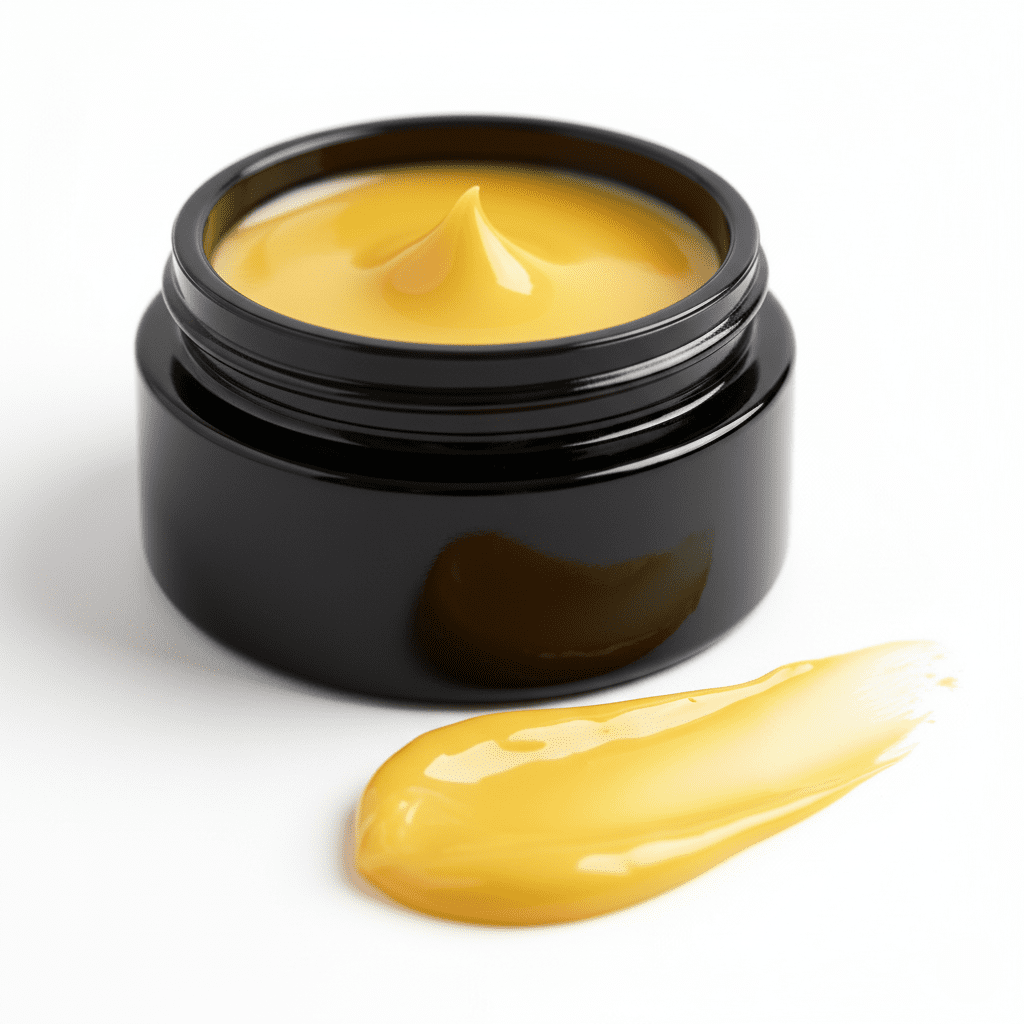
Azure Tansy
Balm™
Complejo reparador y protector intensivo
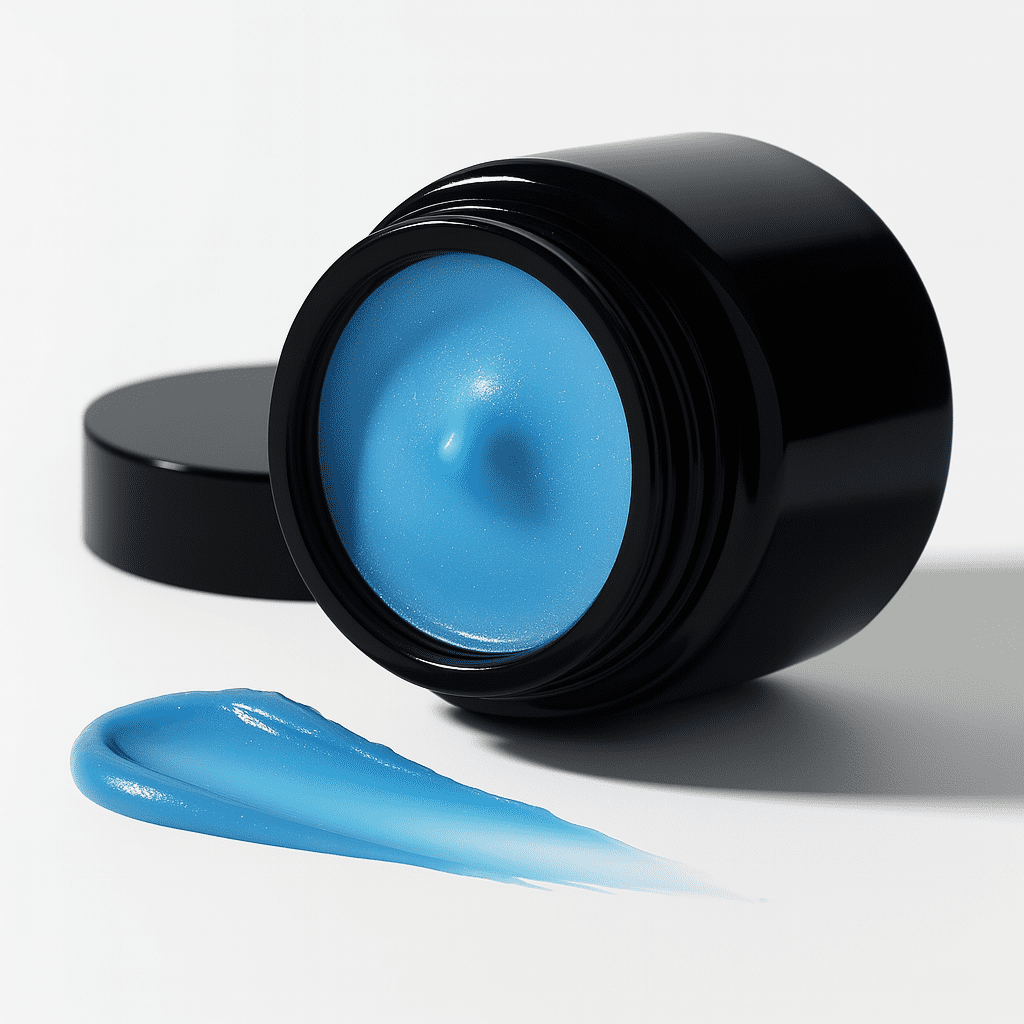
TerraPure - Original Deodorant
Protección intensa, de forma natural.
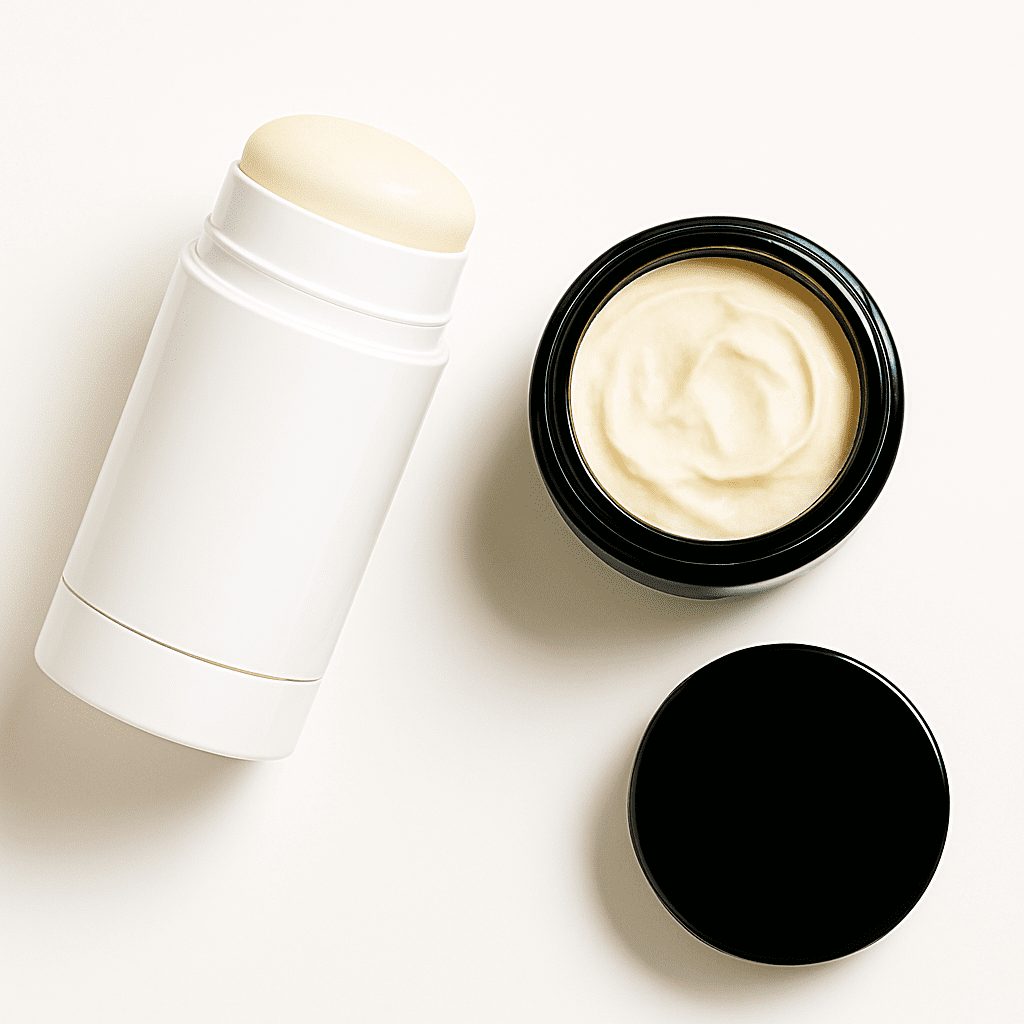
Restorative Phyto‑Serum Oil™
Renovación y equilibrio. Transformación visible en cada gota.
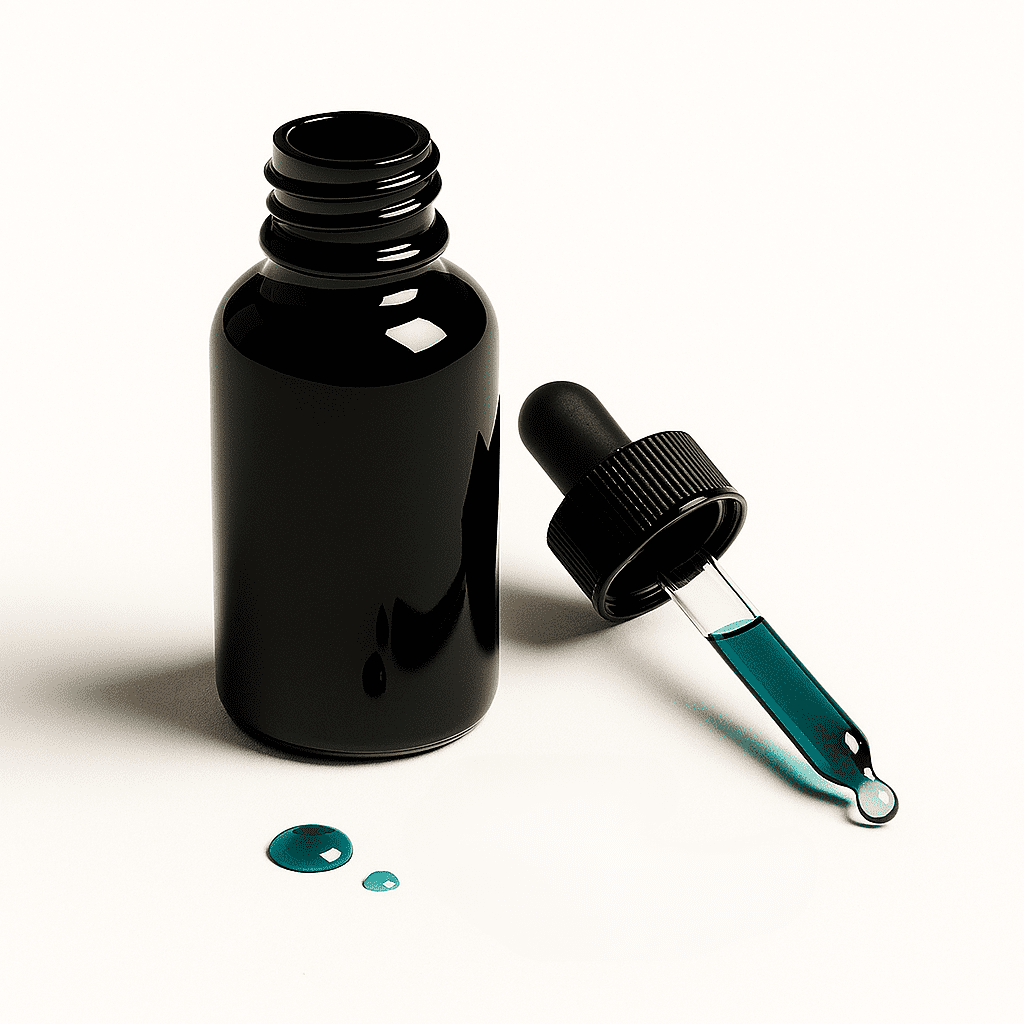
Potenciamos tu piel para que prospere.
Boletín de inscripción
¿Listo para invertir en el futuro de tu piel con los mejores ingredientes naturales? Explora nuestras colecciones o únete a nuestra comunidad para obtener consejos de expertos y acceso exclusivo.
Valoramos su confianza cuando comparte sus datos personales con nosotros. Siempre tratamos sus datos de forma justa y respetuosa, limitándonos a la finalidad mencionada anteriormente. Si desea saber más sobre cómo tratamos sus datos, lea nuestro Política de Privacidad.
